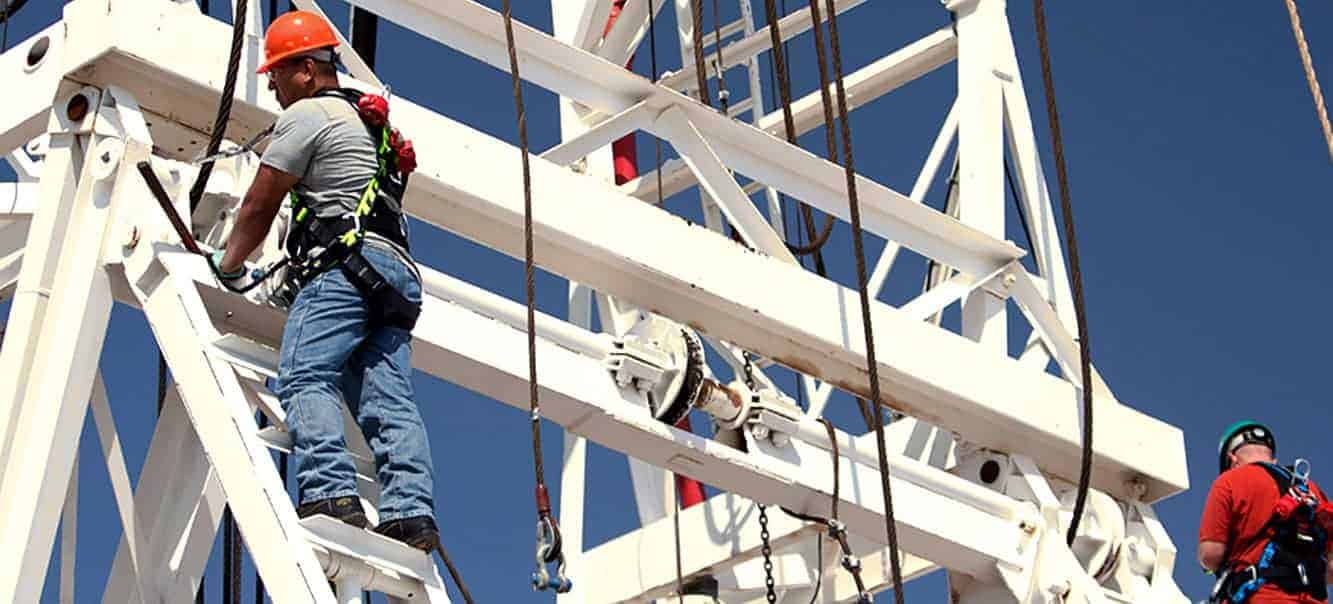Business Stability Is Imperative For Long-Term Growth
The SEIFSA mission encapsulates the essence of its product and service offerings to its affiliated member companies. SEIFSA is a Federation of Employer Organisations which collectively represent the views, goals and objectives of almost 2000 member companies. SEIFSA strives to be the most respected advocate for the metals and engineering industries in order to create innovative businesses positioned for growth and working in partnership with all stakeholders in the interests of Southern Africa.
Running a business in the South African environment, especially in the metals and engineering industries, is an enormous challenge. Policy uncertainty, over regulation, political own goals, labour volatility and inflationary and administered cost pressures all affect management’s ability to plan for the future.
Business owners must wish that they could adjust levels of stability by some cosmic switch. SEIFSA’s product and service offerings, whilst not quite the silver bullet, are specifically designed, tested and proved to assist in managing levels of volatility in the market place. Two of SEIFSA’s most well-known services are:
To ensure that member companies are up to speed with the latest in legislation and regulations, SEIFSA also runs a suite of training in the following disciplines: Human Capital and Skills Development, Industrial Relations and Legal Services, Economics and Commercial, as well as Safety, Health, Environment and Quality (SHEQ). These interventions all have one thing in common: ensuring that employers understand the rules of the game so that businesses can mitigate volatility and maximize stability. Stability has become a business imperative in South Africa. Shareholders, business owners and managers need to use every tool available to achieve stability in their businesses.
The Main Agreement has been crafted over many years to be a tool for both stability and flexibility; it has numerous advantages over and above the Basic Conditions of Employment Act (BCEA).
Traditionally, the South African business community’s Achilles heel has been its struggle to deal with labour disputes and unrest. Labour law is derived from the South African Constitution, which is dedicated to the achievement of social justice. Collective bargaining is a cornerstone of the system and the reduction of disproportionate income differentials is one of its main purposes. The right to strike, which is constitutionally entrenched for the purpose of allowing workers to exercise economic pressure, is a reality, and business must be knowledgeable, skilled and ready to deal confidently in the Industrial Relations sphere. This need is even more acute in sectors such as the metals and engineering, mining and manufacturing. Industrial unrest, strikes and work stoppages pose a very serious threat to the well-being of companies.
Joining one of SEIFSA-affiliated Employer Associations adds a significant tool to your armoury. There are five distinct ways in which joining SEIFSA will protect your business:
- FIXED COSTS
The Main often a three-year deal. There is a no-strike clause and a clear and defined protection against a compulsion to be pulled into plant-level bargaining. For SEIFSA-affiliated member companies, the costs are fixed, clear and defined
- EFFECTIVE EXEMPTION PROCEDURE
If a SEIFSA member company cannot afford the parameters of the deal (i.e. wage increases, leave bonus, etc.), there is a clear and simple exemption procedure to apply for partial or full exemption from any monetary provision of the Agreement. Exemption applications are not dependent on the agreement of employees or their unions, but on the financial situation a company finds itself.
- FLEXIBILITY
There are no short-time, lay-off or overtime exemption provisions in the Basic Conditions of Employment Act. However, all these options are available to SEIFSA member companies. Once again, this gives business owners more flexibility and options when faced with down-time or up-ticks in production.
- LABOUR BROKERS
For SEIFSA member companies, the use of Labour Brokers continues unchanged. If a company is a member of a SEIFSA-affiliated Association, the Main Agreement permits the contracting of employees to a client via a labour broker (which is also a member of SEIFSA) for reasons related to site work, turnaround work, ship-repair work and short-term fluctuations in work load linked to time or the completion of the specific work, project or job detailed in the contract. In other words, the 2018 Constitutional Court ruling on deeming (i.e. that an employee supplied to a company by a labour broker becomes the permanent employee of the client after three months) has no bearing.
- FULL AND FINAL SETTLEMENT
SEIFSA member companies run their businesses under the knowledge that for the duration of the Main Agreement (at the moment until 30 June 2020), all terms and conditions of employment are locked into the Agreement and remain unchanged under a full and final settlement provision that guarantees exactly what business owners need: certainty, stability and a business environment free of industrial unrest and labour volatility.
To join an Employer Association federated to SEIFSA, call Ms Theresa Crowley on (011) 298-9419 or email theresa@seifsa.co.za
To contract with a Labour Broker or TES which is a member of SEIFSA, email Ms Christa Smith on christa@associationadministrator.co.za
Atrocious Safety Health Awareness Drives Confusion and Mis-Information in Health and Safety
Huge Reputational Risk for Companies in Metals and Engineering Sector
Protection of employees from occupational injuries and illness is one of the most underrated aspects in corporate governance and ethics. Despite some impressive examples of effective health safety systems, some medium-sized and smaller companies exist in a state of confusion and hear-say when it comes to health and safety, hence they struggle to protect their employees from workplace risk exposures.
According to national occupational injuries and fatalities statistics, the metals and engineering sector has the second highest number of fatalities in the country. Although SEIFSA keeps its membership informed on occupational health and safety requirements, our efforts are limited to members of our Associations. To this end, says SEIFSA Safety, Health, Environment and Quality Executive Nonhlalo Mphofu, a comprehensive and integrated education campaign is needed urgently.
A reactive approach to health and safety is the major cause of high occupational accident rates. Mphofu likens this approach to fighting fires in the wind. When fatalities occur, the lives of their loved ones are irreparably damaged – all because businesses treat safety as a “common sense” issue, and not as something that needs to be scientifically practised every day and implemented proactively and consistently by everyone.
Some organisations emphasize “transactional safety”, such as wearing proper footwear and personal protective clothing (PPE), and heeding workplace signs and notices. However, our tolerance levels for occupation health and safety (OHS) risks that could make a difference in the lives of individuals and families are high. In order to provide minimal protection for employees, it is absolutely necessary to understand the legal framework applicable to workplace risks. This includes the Occupational Health and Safety Act, the Compensation for Occupational Injuries and Diseases Act (COIDA) and even the Road Accident Fund, in some unique instances.
There are many incidents that fly under the radar because the capacity in the Department of Labour’s inspectorate in South Africa is inadequate. The weak inspection and enforcement system has worsened complacency owing to less fear of consequences. Following media coverage of the recent fire at the Bank of Lisbon Building in Johannesburg recently, Mphofu was shocked to note what so-called safety experts had to say about the incident afterwards. She summarised the narrative into three points:
- There was a general lack of knowledge about the legal obligations of role players within the workplace;
- Very few people had an informed view of the health and safety representatives and health and safety committees in terms of the Occupational Health and Safety Act;
- Hardly anyone referred to fire safety requirements in terms of the City of Johannesburg’s Emergency Services By-laws.
In light of the negative impact of workplace accidents on productivity and the bottom line, it is crucial for companies to view health and safety compliance as a value add rather than a mere cost centre. Zero tolerance to occupational injuries and illness must be the over-arching theme for any health and safety culture.
Below Are 10 Questions to Evaluate your OHS Performance:
- Has applicable OHS legislation, including municipal bye-laws, been identified and made available for reference?
- Have workplace hazards and risks been identified and are they regularly reviewed?
- Have measures to mitigate risks been established, and are those measures monitored for effectiveness?
- Are health and safety committee meetings being held regularly and are records of recommendations maintained?
- Has relevant health and safety training been provided to employees, supervisors, managers, health and safety representatives, health and safety committees, 16.2 Appointees, First Aiders and Fire Fighters?
- Are Planned Job Observations performed as reasonably required?
- Are near-misses recorded and investigated?
- Are emergency procedures in place and drills regularly performed?
- Are accident reporting procedures in place and in line with the OHS Act and COID Act?
- Do you conduct internal annual compliance audits?
Failure to comply with the requirements of either the OHS Act or COID Act can result in fines, penalties and imprisonment.
In order to evaluate the effectiveness of health and safety systems, organisations must not only investigate accidents involving injury, illness or loss of life, but also seriously investigate all near-misses and nearhits. According to the Frank Bird’s triangle, by the time a fatality occurs, there would have been 600 near misses (that is 600 opportunities to prevent that fatality)
In order to embrace risk-based thinking, near-misses must be seen as opportunities for improvement through mapping out and implemented preventive measures. Top management must monitor such reporting systems and prevent them from deteriorating into witch-hunts or name-and-blame situations. To this end, organisations must have policies to protect employees who report incidents and near-misses from victimization by fellow employees or line managers.
The SEIFSA SHEQ Division offers various support to industry though general consultancy on workplace health and safety matters and Occupational Health and Safety systems (ISO 45001: 2018) development. Further to that, we also offer the following training and workshops to keep our audiences knowledgeable and compliance ready:
- Legal Liability Training;
- 16.2 Appointees Workshop;
- ISO 45001: 2018 Workshop;
- Health and Safety Representatives Training;
- Incident Investigation Training; and
- OHS Risk Assessment Workshop
A third consecutive decrease in broader manufacturing production reflects a generally difficult business environment amid persistently low domestic demand, says SEIFSA
Johannesburg, 8 November 2018 - The Steel and Engineering Industries Federation of Southern Africa (SEIFSA) today laments a third consecutive decrease in output of the broader manufacturing sector – including its diverse metals and engineering (M&E) cluster of industries – for September 2018, underpinned by a difficult operating environment and a worryingly low domestic demand.
Speaking after the release of manufacturing production figures by Statistics South Africa (StatsSA) today, SEIFSA Chief Economist Michael Ade said the manufacturing sector has generally been facing headwinds since the start of the year, characterised by declining business and consumer confidence.
“Although production data in the sector is still positively trending, the data has consistently declined from July 2018. Moreover, corresponding increases in fuel prices, a weaker rand and higher prices of both intermediate and final input have increased operational costs, also depleting existing margins,” said Dr Ade.
He said the output performance in September, which officially closes off quarter three of 2018, is perturbing, especially considering that domestic demand is generally subdued as a result of the economic recession and a volatile exchange rate. He said it was clear from the data that the positive sentiments following the stimulus plan recently outlined by President Cyril Ramaphosa has yet to filter through to the manufacturing sector and the M&E cluster.
“Consequently, the general contribution of the sector to the Gross Domestic Product in quarter three will be lower than expected, especially considering that the benefits from outlined stimulus interventions will only become effective with a lag,” said Dr Ade
The latest preliminary seasonally-adjusted data capture a decrease in production in the broader manufacturing sector in September 2018 when compared with August 2018. On a continuous three-monthly basis, output in the manufacturing sector decreased consecutively from 2,7% in July 2018, to 1,5% in August 2018 and 0,1% in September 2018.
Dr Ade said the poor performance in September 2018 was expected, following the recent release of deteriorating data for the purchasing managers’ index (PMI), which dipped to almost a decade low of 42,4 index points. The composite ABSA manufacturing PMI data for October effectively signalled a fourth successive decrease from July, further trending away from the 50-point benchmark level which separates expansion from contraction in business activity, thus triggering new concerns about the state of the economy.
“SEIFSA encourages businesses to stay resilient in the face of the current adversity characterised by volatile production, high unemployment levels, a trade deficit and subdued domestic demand, as policy makers implement measures to help the economy navigate the trough,” Dr Ade concluded.
Ends
Issued by:
Ollie Madlala
Communications Manager
Tel: (011) 298 9411 / 082 602 1725
Email: ollie@seifsa.co.za
Web: www.seifsa.co.za
Consistent Purchasing Managers’ Index Decline Highlights the Challenges Faced By Manufacturers
Johannesburg, 1 November 2018 - The Steel and Engineering Industries Federation of Southern Africa (SEIFSA) is concerned about the dip in overall business activity in the broader manufacturing sector, as reflected in the Absa Purchasing Managers Index (PMI) released today. Speaking after the release of the Index, SEIFSA Economist Marique Kruger said given that the PMI is an indicator of the economic health of the broader manufacturing sector, of which the metals and engineering (M&E) cluster is part, the data highlight that the sector is still facing significant challenges.
The overall headline PMI data indicate that manufacturing activity in the country declined for a third consecutive month to 42.4 percent in October 2018, from 44.5 percent in September 2018, with the seasonally-adjusted index moving further away from the neutral level of 50, which separates expansion from contraction.
“The consistent decrease in the PMI data highlights the challenging operating environment of business amid prevailing low levels of domestic demand, increasing input costs as a result of a generally weak exchange rate and increasing fuel prices which negatively impact on escalating logistics costs,” said Ms Kruger.
She added that the headline PMI and its five main sub-indices play an important role in businesses’ decision-making processes. The business activity index, which enables manufacturers to gauge production activity and output levels in the sector, remained largely unchanged at 40.3 percent in October 2018. He said the index had performed poorly on a consistent basis since March 2018, and that its poor performance was concerning for manufacturers in the sector, especially given the low domestic demand levels.
“The best performer was the employment sub-index which improved from 43.3 percent in September 2018 to 44.2 percent in October 2018. Given that the employment sub-index gives an indication of the possible movement in employment numbers in the domestic economy, the uptick is encouraging. This is especially so following the release of the Quarterly Labour Force Survey on Tuesday, which indicated that unemployment increased to 27.5 percent in the third quarter of 2018,” she said.
In conclusion, Ms Kruger said that she expected businesses in the sector to take advantage of the weaker exchange rate towards an improvement in export volumes and increased demand for exported products, which will invariably have a positive impact on the sector’s performance.
Issued by:
Ollie Madlala
Communications Manager
Tel: (011) 298 9411 / 082 602 1725
Email: ollie@seifsa.co.za
Web: www.meindaba. seifsa.co.za
SEIFSA Welcomes Us’s Decision To Exempt South Africa's Aluminium And Steel Products And Encourages Further Engagement To Cancel All Tariffs
Johannesburg, 24 October 2018 - The Steel and Engineering Industries Federation of Southern Africa (SEIFSA) welcomes the decision by the US Department of Commerce (DoC) to exclude some of South Africa’s steel and aluminium products from the section 232 tariffs, initially put in place by the Trump administration on the basis of safeguarding US national security, SEIFSA Chief Economist Michael Ade said this evening.
Following months of intense negotiations and lobbying by the South African Government with its US counterpart for a possible reprieve on a 25% steel and 10% aluminium import tariffs, there seems to be some light at the end of the tunnel for South African businesses which export products to the US market as the DoC granted product exemptions for 161 aluminium and 36 steel products.
“This is really good news for South African companies which export to the US market. Hitherto, local companies had increasingly grown worried about the possibility of losing US market share and also not having existing contracts renewed upon expiration,” Dr Ade said.
In addition, the concern was that US steel- and aluminium-consuming companies may seek certainty by buying intermediate products from countries that have been exempted from the import tariffs.
“The decision by the US DoC, therefore, provides a degree of comfort to local companies at a time when local demand is very low and companies are increasingly turning to regional and international markets to sell their intermediary products. The decision is equally good news for the US-based companies that had made submissions to the DoC for exclusions on a case-by-case basis. It permits the successful applicants to plan productive processes in advance,” said Dr Ade.
He added that the US DoC’s decision to exempt some of South Africa’s aluminum and steel products also highlighted the power of local stakeholders jointly mobilising efforts in dealing with perceived challenges. Dr Ade said both the local industry and the Department of Trade and Industry (DTI) have a reason to feel vindicated for having put the interests of the country first and reaffirmed their earlier arguments that SA exports to the US do not constitute a threat to the US economy. Instead, local steel and aluminium exports to the US are key intermediary inputs to manufactured US consumer and business goods.
“SEIFSA gratefully acknowledges the contribution of our Government and specifically lauds the DTI in making significant progress in this regard. The metals and engineering cluster will not relent and will continue to support the efforts of Government in highlighting the importance of the country’s products being exported to the US markets, as a source of strategic intermediate inputs to the US manufacturing, utility and construction sectors.
“SEIFSA further encourages local companies to continue to persuade their US counterparts to apply for more exemptions as there is scope to improve the current exemption lines,” Dr Ade said.
In conclusion, Dr Ade said that both the South African Government and the local industry should continue to engage the US government to eventually cancel the applicable import tariffs on all steel and aluminum products exports to the US.
“There is strength in a united approach and it is evident that the collaboration between the Government and the local steel industry gives proof of the maxim that hard work helps anyone to move mountains,” he said.
Issued by:
Ollie Madlala
Communications Manager
Tel: (011) 298 9411 / 082 602 1725
Email: ollie@seifsa.co.za
Web: www.meindaba. seifsa.co.za
Continuous Improvement in Selling Price Inflation for Metals and Engineering Sector Intermediate Products Is Pleasing, Says SEIFSA
Johannesburg, 25 October 2018 - The Steel and Engineering Industries Federation of Southern Africa (SEIFSA) welcomes the continuous improvement in the Producer Price Index (PPI) for intermediate manufactured goods, as published by Statistics South Africa (Stats SA) today.
Speaking after the release of the figures, SEIFSA Economist Marique Kruger said the data had improved consecutively from March this year, alongside the PPI for final manufactured goods, with the latter slowing down in September 2018. This was good for businesses in the Metals and Engineering (M&E) cluster against the backdrop of increased volatility in imported input prices as a result of a generally weak exchange rate.
The StatsSA data showed that on a year-on-year basis, the PPI for intermediate manufactured goods increased to 7.7 percent in September 2018, from 5.9 percent recorded in August 2018, while the PPI for final manufactured goods for the broader manufacturing sector also registered an almost lateral increase of 6.2 percent in September 2018 on a year-on-year basis.
“Given that the PPI for intermediate manufactured goods has maintained an upward trajectory since the first quarter of 2018, businesses should be able to leverage off the improvement in selling price inflation. Business conditions have generally been tough. Domestic producers are struggling to move stock out of the warehouses amid low levels of domestic demand and higher intermediate input costs. This is compounded by increasing energy and fuel prices and a weaker exchange rate, which further add to the individual cost curves of businesses,” Ms Kruger said.
She added that it was crucial that a positive differential between input cost inflation and selling price inflation be maintained in order for the M&E cluster of industries to be attractive to investment, as investments are often driven by the return on investment. A positive differential enables manufacturers to pass cost increases onto the market, thus enabling businesses to improve their margins.
Ms Kruger said SEIFSA would continue to monitor the trends.
Issued by:
Ollie Madlala
Communications Manager
Tel: (011) 298 9411 / 082 602 1725
Email: ollie@seifsa.co.za
Web: www.meindaba. seifsa.co.za
SEIFSA Welcomes Finance Minister Tito Mboweni's Medium-Term Budget Policy Statement
Johannesburg, 24 October 2018 – The Steel and Engineering Industries Federation of Southern Africa (SEIFSA) welcomes Finance Minister Tito Mboweni’s maiden Medium- Term Budget Policy Statement (MTBPS), with spending projected at R5.9 trillion over the medium term, against the backdrop of increasing production costs, a volatile exchange rate, galloping fuel prices, low domestic growth and low Government revenue collection.
“The MTBPS basically provided more impetus to growth as policy makers seek for ways to guide the sick economy as it slowly claws its way back to good health,” SEIFSA Chief Economist Michael Ade said.
He added that the MTBPS was very realistic, reflected the country’s current condition and also placed a lot of emphasis on the need for Government to re-prioritize spending and re-allocate under-utilised funds from non-performing departments to Government departments in urgent need of funds.
Dr Ade said the Budget highlighted the need for structural reforms and for the scourges of corruption and profligacy in Government departments and State-owned enterprises to be ended as a matter of urgency.
“Amongst other imperatives, SEIFSA welcomes the plan by the Government to restructure the electricity sector, including the long-term plan to restructure Eskom. This is good news, indeed, given the importance of electricity as an input to the metals and engineering (M&E) cluster in particular and the manufacturing sector in general,” Dr Ade said.
SEIFSA also welcomed the planned increase in public infrastructural spending to the tune of R855.2 billion over the next three years since that, together with other planned infrastructural spending, will help in stabilising and reducing local logistics costs pressures on businesses. Accordingly, a firm partnership between the Government and the private sector was encouraged in order to promote infrastructural development and also support the Government in delivering on the planned objectives.
“A salient point made by the Minister is the initiative to expedite the process of VAT refunds to businesses to the tune of R20 billion, with R11 billion meant to clear the backlog of refunds and R9 billion meant for the current fiscal year. This is good news to financially-strapped small businesses. It is also good supply-side economics, meant to put money back into the coffers of businesses in order to stimulate corporate spending and boost economic growth. Ultimately, consumers will benefit from a lower cost of production, resulting in more employment,” said Dr Ade.
Most importantly, Dr Ade said SEIFSA welcomes yet another deferred imposition of the proposed carbon tax. Although the implementation of the carbon tax has been postponed several times since it was introduced nine years ago, it was now imminent, with a second draft bill published for comment and scheduled for early January 2019.
Instead of the tax being imposed on 1 January 2019, it has been postponed to 1 June 2019.
Dr Ade said SEIFSA had repeatedly argued that the carbon tax was regressive and that the broader society may be affected disproportionately.
“Also considering the prevailing difficult operational environment of businesses, it is misguided to further burden businesses with a carbon tax as short-term gains can leave long-term effects. The planned postponement is good for embattled businesses,” he said.
Dr Ade said the MTBPS highlighted the urgent need for the Government to stabilize its debt and expenditure levels, while also correspondingly improving on its revenue collection. A detailed blueprint will be provided in the up-coming budget speech in February 2019.
“As the Government seeks for ways to plug existing gaps in public finances in next year’s budget speech, including closing the imminent shortfall of R1.2 billion revenue loss arising from a planned zero-rating of key items generally consumed by the poor, SEIFSA hopes that the plight of local businesses in the manufacturing sector – including its diverse M&E cluster – will also be taken into account,” Dr Ade concluded.
Issued by:
Ollie Madlala
Communications Consultant
Tel: (011) 298 9411 / 082 602 1725
Email: ollie@seifsa.co.za
Web: www.meindaba. seifsa.co.za
SEIFSA Elects Its Most Transformed Board To Date As Elias Monage Assumes The Presidency
Johannesburg, 14 October 2016 – Arabela Holdings Executive Chairman Elias Monage was elected President of the Steel and Engineering Industries Federation of Southern Africa (SEIFSA) and Chairman of its Board of Directors with effect from Friday, 12 October 2018.
A seasoned business leader with vast experience in business in general and the metals and engineering sector in particular, Mr Monage was elected President during SEIFSA’s 76th Annual General Meeting in Parkton, Johannesburg on Friday. ArcelorMittal South Africa Marketing Director for Africa Alpheus Ngapo, Babcock International Africa Division Company Secretary Neil Penson and Auto Industrial Group CEO Andrea Moz were elected as Vice Presidents.
Mr Monage has also served as the Black Business Council’s Convener at NEDLAC and is the former President of CAPES and a former Director of Steloy Casting. He was first elected onto the SEIFSA Board in 2016.
Other Board Members also elected at Friday’s AGM were South African Mint Company (Pty) Ltd Managing Director Tumi Tsehlo, MphoNo Energies Managing Director and KSB Pumps & Valves (Pty) Ltd Board Member Nonhlanhla Ngwenya, Lixil Africa Chief Legal and Human Resources Officer Seneca Lutchmana and Murray & Roberts Power & Energy Human Resources Executive Patrick Metswi. They join Africa Steel Holdings Founding Director Mayleen Kyster and Zimco Group (Pty) Ltd Human Resources Manager Ellen Veldhoven on the SEIFSA Board.
SEIFSA Chief Executive Officer Kaizer Nyatsumba congratulated Mr Monage as President and the others as Board Members. He said that this was the most diverse that the Federation’s Board has been in its history.
“We commend SEIFSA membership Associations for having elected the most transformed Board in the Federation’s history, both in terms of race and gender. Colleagues and I are encouraged by this development, which we believe to bode well for transformation in the metals and engineering sector. We look forward to working with the new President and Board Members,” Mr Nyatsumba said.
Delivering the Presidential Address, outgoing Interim President Alpheus Ngapo said although production in the metals and engineering sector was generally increasing alongside international commodity prices, the cluster was still going through a structural adjustment and its challenges were still prevalent.
“Its growth pattern still fluctuates, productivity is generally poor, capacity utilisation is still below the required 85% and investment and profit levels are low. Domestic production costs have also been rising alongside output levels,” Mr Ngapo said.
He added that although these challenges signal the resilient nature of businesses in the metals and engineering sector, regrettably the optimism and hope for better future business prospects was not shared by all purchasing executives. He said there continued to be understandable concern among a number of stakeholders and observers that the country is de-industrialising.
“That concern is a direct consequence of the ongoing decline of broader manufacturing’s contribution to South Africa’s GDP over the past few decades, at a time when other sectors such as finance, real estates and business services and wholesale and retail trade, catering and accommodation grew at a higher pace,” he said.
Mr Ngapo said other challenges currently facing the sector were South Africa’s lacklustre economic performance, followed by continuing significant imports of cheap products and skills as well as the manufacturing sector’s apparent lack of international competitiveness.
“These challenges will continue to stare us in the face, and maybe even worsen, until such time that Government, business and labour get together to address them constructively, putting the country’s interests above all else, and then implementing the solutions agreed to,” he said.
University of Johannesburg’s Pan-African Institute Associate Professor Mcebesi Ndletyana, a keynote speaker at the AGM, provided an insightful analysis of the country’s political economy.
He said while the initial optimism that came about as a result of the replacement of Jacob Zuma by Cyril Ramaphosa as President of the country in February has since subsided, he remained hopeful that a new dawn and a promise of renewal was still possible, but only if the ruling party worked hard to distinguish itself from Zuma’s ANC.
“The ANC Ramaphosa inherited was not only riddled with corruption, but it had also turned South Africa into a clientelist state that served as client for the Gupta family. For the current administration to stand a chance of securing victory at next year’s election, it is of paramount importance for it to cleanse itself of corrupt leaders, including Ministers implicated in State capture,” Professor Ndletyana said.
He said for a different ANC to emerge, a new, morally-conscious leadership would have to rise and reform the ANC, adding that failure to do so would result in the organisation losing the 2019 elections.
Issued by:
Ollie Madlala
Communications Manager
Tel: (011) 298 9411 / 082 602 1725
Email: ollie@seifsa.co.za
Web: www.meindaba. seifsa.co.za
Subdued Domestic Demand Likely To Constraint Promising Manufacturing Production Outlook, Says SEIFSA
Johannesburg, 11 October 2018 – The latest manufacturing production data released by Statistics South Africa today confirms the resilience of the Metals and Engineering (M&E) cluster of sub-industries, despite the country officially stuck in a technical recession, Steel and Engineering Industries Federation Southern Africa (SEIFSA) said this afternoon.
SEIFSA Economist Marique Kruger said surprisingly, production in the M&E cluster of industries continue to trend upward in August 2018 from July 2018, in line with the broader Manufacturing sector, despite signs of headwinds underpinned by weeks of uncontrollable petrol price increases, generally weak exchange rate, high energy costs and municipal tariffs.
“The official output statistics released today is good and encouraging to businesses in an environment interlaced with doses of economic, policy and political uncertainty,” she said.
Output for August 2018 in the M&E cluster improved to 3.9% on a month-on-month basis, from a lower 3.2% recorded in July 2018, while there was a corresponding year-on-year increase of 4.6% in August 2018 from 3.4% in August 2017. The annual performance of the sub-industries was generally in line with the broader Manufacturing production which increased on an annual basis by 1.3% in August 2018 when compared with August 2017.
“Moreover, it is encouraging to note the dominant performance of key M&E cluster of industries, which were the largest positive contributors to the improved performance of Manufacturing. Specifically, the basic iron and steel, non-ferrous metals products, metal products and machinery all registered 2.1% improvement in the volume of production and contributing 0.4 of a percentage point,” Ms Kruger said.
She added that the improvement in Manufacturing output was generally good for the economy
“The current subdued domestic demand is likely to constraint Manufacturing production outlook. The expectation is for its cluster of sub-industries, including the metals and engineering industries, to continue to benefit from a possible up-turn in domestic demand (albeit mild) in due course. However, the continuous improvement in domestic growth will depend, amongst other factors, on the rapid implementation of the President’s stimulus plan - with the detail to be revealed in the upcoming Medium-Term Budget Policy Statement.
Issued by:
Ollie Madlala
Communications Manager
Tel: (011) 298 9411 / 082 602 1725
Email: ollie@seifsa.co.za
Web: www.meindaba. seifsa.co.za
Employment Equity: May the Force Be with you – The Serious Consequences of the Employment Equity Act
“Don’t put it off”, that’s the warning from SEIFSA to its members and all other companies within the Metals and Engineering Sector.
The Department of Labour has ramped up its enforcement mechanisms in a concerted effort to force compliance with the country’s labour laws. Although busy, with companies fulfilling the last orders for the year or trying to make targets with one last push, the October-December period is also the time to compile and submit Employment Equity Reports online.
The harsh reality is that The Department of Labour’s (DoL’s) deadline looms large on 15 January 2019; with the Metals and Engineering Sector, amongst others, shutting down towards the middle of December until the second week in January, companies cannot afford to be caught short. Human Resource professionals must lead the charge because the Department can impose – and has previously imposed – fines of R1.5 million.
“We are here to help,” says SEIFSA Human Capital and Skills Development Executive Melanie Mullholland. “Our auditing, training and consulting services are personal and can really enable the focus of a company’s reporting capability. We prepare you for exactly what the Department of Labour is looking for”.
SEIFSA’s support speaks directly to our mission: the Federation needs to ensure that its member companies have the tools to transform themselves so that companies can focus on their core business.
“Transformation makes business sense,” says Ms Mulholland.
During the launch of the 18th Employment Equity Report, Labour Minister Mildred Oliphant had this to say:
The trouble is that, broadly speaking, we are not making much progress. There are times when one feels that even the EE Plans are put together grudgingly, with no real will to implement them. Twenty years since the Employment Equity Act was introduced, there is not much to show for it.The word “grudgingly” and the phrase “no real will” should worry businesses. It speaks to the Government’s perceived attitude of business. It also demonstrates why there is a renewed appetite for ensuring compliance.
“All of us must commit to transformation; we simply must lift our respective games, especially in the Metals and Engineering sector”, says Mullholland.
“We are resolute about scaling up inspection and enforcement and targeting those areas that will give us the bigger impact”, said Minister Oliphant.
In October 2018 the Department of Labour’s Employment Equity Directorate embarked on Employment Equity roadshows in the form of Public Hearings throughout the country. Its focus is on the amendments to Section 53 (the ability to trade with Government) and proposed sectorial targets, contained in the Employment Equity Act Amendment Bill and the Draft Regulations released in September 2018. SEIFSA strongly recommends that Sections 24 Managers, Human Resource (HR) practitioners, especially those in the Metals and Engineering Sector, attend these hearings to ensure that they stay fully informed of the requirements and implications for businesses that do not comply.
In the meantime, let’s begin with what your company needs to start doing immediately.
THE BASICS
- Designated employers that employ 50 or more employees or have an annual turnover that exceeds or equals the amounts in schedule 4 of the EEA.
- For the Manufacturing Sector, the threshold is R30 million.
- Check the process below
- Communicate and Consultwith the workforce;
- Establish a committee representative of all occupational levels;
- Conduct an analysis to ensure a Review all Policies and any potential barriers;
- Prepare an Employment Equity Plan and Monitor and Evaluate targets against Goals.
- Submit the Reportonline on or before 15 January.
- It is vitally important to follow the practices set out above as it mitigates risk and gives your company a better chance to be compliant. Non-compliance to this Act attracts fines and penalties.
- The Department of Labour’s (DoL’s) online portal for EmploymentEquity submissions is open – CEOs and Section 24 Managers receive an activation code from DoL to access the portal.
SECTION 53: Alert! Your business’s ability to trade with Government is at Risk
The amendments, particularly Section 53, should make the Metals and Engineering Industry stand to attention.
Even though you may have long-standing contracts with Government Departments and related entities, your business will now need a Department of Labour (DoL) certificate to prove compliance with the Employment Equity Act. This could effectively see many in the industry potentially missing out on lucrative infrastructure projects under way or being planned, such as those announced by President Cyril Ramaphosa as part of the stimulus package.
Those who are ready and compliant will have an enormous advantage of other businesses that are lagging behind.
“This is the ‘carrot’ that must incentivize the industry to get its house in order. It certainly adds weight to the phrase that transformation is good for business,” says Ms Mulholland.
SEIFSA plans to play a pivotal role in getting the Metals and Engineering Sector ready for this new reality. Through its relationship with the Department of Labour, its advice, training, consultation and audits will be strategic tools for members of the Federation and the industry in general.
Trying to achieve employment equity and BBBEE targets in the absence of an integrated employment equity and diversity management strategy could be one of the main reasons for the lack of progress in the industry. There is too much at stake, so don’t waste time – and don’t be left behind because transformation makes business sense.










